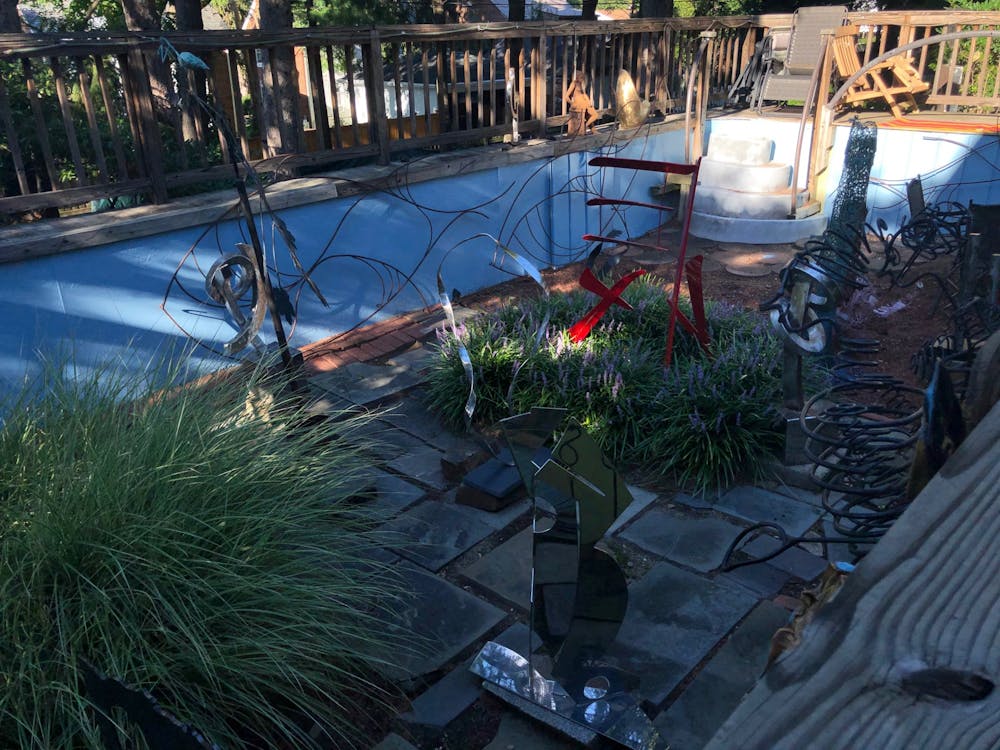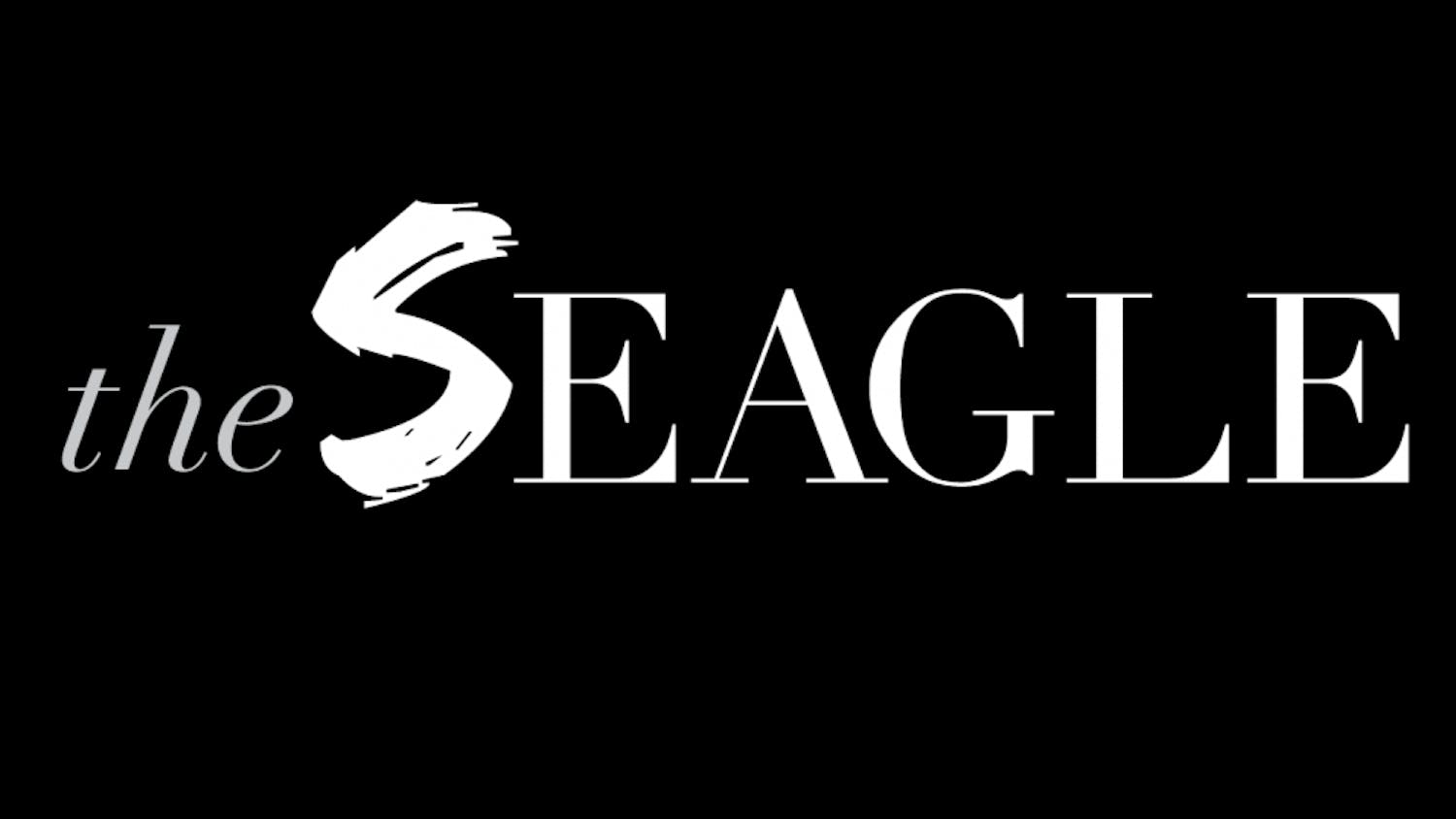Correction: This article has been corrected since it was first published to clarify that Goldberg said she was one of the first women in the country to own a woodshop studio, not one of the first women in D.C. to own an art studio.
When you walk into Zenith Gallery, you first have to step across a quaint path surrounded by small-scale sculptures to meet a homey front door. Unlike most galleries in the District, this gallery is set up inside its director’s own home.
Margery E. Goldberg, the owner of the home and the curator and featured artist of the gallery, does not seem to mind random people filing in and out of her home office and through her kitchen to observe or appreciate her paintings.
“Being surrounded by all of this art, I find it incredibly uplifting about human nature,” Goldberg said. “Because human nature is pretty horrible at the moment, and this makes me think there is promise for the world.”
There are sculptures worth thousands of dollars on her dining room table, and gorgeous paintings that decorate her stairwells. Her backyard even features a drained swimming pool, repurposed as a sculpture garden.
At first, Zenith Gallery is a bit overwhelming and awkward for lack of walking room and solitude, but the value of the art makes up for it. From gorgeous driftwood sculptures to intricate map cut-outs, each piece is unique and beautiful.
The gallery is currently hosting a series titled “Artists Doing the Right Thing!” This title holds much weight for the curator and the artists featured.
“Doing the right thing sometimes is very ambiguous, and it all depends on how it relates to the experience of the society as a whole and the artist as the individual,” said Doba Afolabi, an artist featured in Zenith Gallery.
Afolabi, whose art has been featured in several galleries in the U.S., Middle East and Africa, paints large-scale acrylic paintings depicting people and movement. He hopes his paintings have the capacity to connect and teach others, he said.
“This art, sometimes, is what we can all know as a universal language,” Afolabi said. “[It] doesn’t have a dialect ... but something that, if you put it up, every scribe and tribe will be able to see it and interpret it in their own way.”
Mihira Karra is one of the artists also featured in Zenith Gallery. She is a full-time employee of the U.S. Agency for International Development, but she turns to art to better understand and make sense of the world.
“Just like they say eyes are the windows to the soul, I think art has always been the window to society and what's happening in society,” Karra said.
Karra makes intricate portrait collages out of pieces of fabric that often tell a story about the history behind the subject. Zenith Gallery features her portraits of Michelle and Barack Obama and Colin Kaepernick. She hopes people walk away from her art with a better understanding of history that preceded the figures she depicts.
Goldberg, Afolabi and Karra are just three of the over 15 artists featured in “Artists Doing the Right Thing!” in Zenith Gallery. To understand a fraction of the featured art, visit the virtual gallery. But, to see the full range of the art and sculptures, visit the 1429 Iris St. location in Northwest D.C.
Goldberg has been a part of the D.C. art scene for 42 years. She believes she was one of the first women in the country to have her own woodshop studio, she said.
She moved the gallery into her home about 10 years ago, around the time that she won the Mayor’s Arts Award for Excellence in Service to the Arts in 2010.
Along with maintaining the gallery, Goldberg is also the founder and executive director of the Zenith Community Arts Foundation, a nonprofit organization committed to public arts advocacy and education. The foundation is working to build a mobile woodshop to train the D.C. community’s younger generation in carpentry and arts skills.
With her eyes on the future generation of artists and crafters, Goldberg is inspired by the talent and life that surrounds her.
“Artists don’t think in terms of weeks, days or decades; we think in terms of centuries and millenniums,” Goldberg said. “So what we build has to last.”





